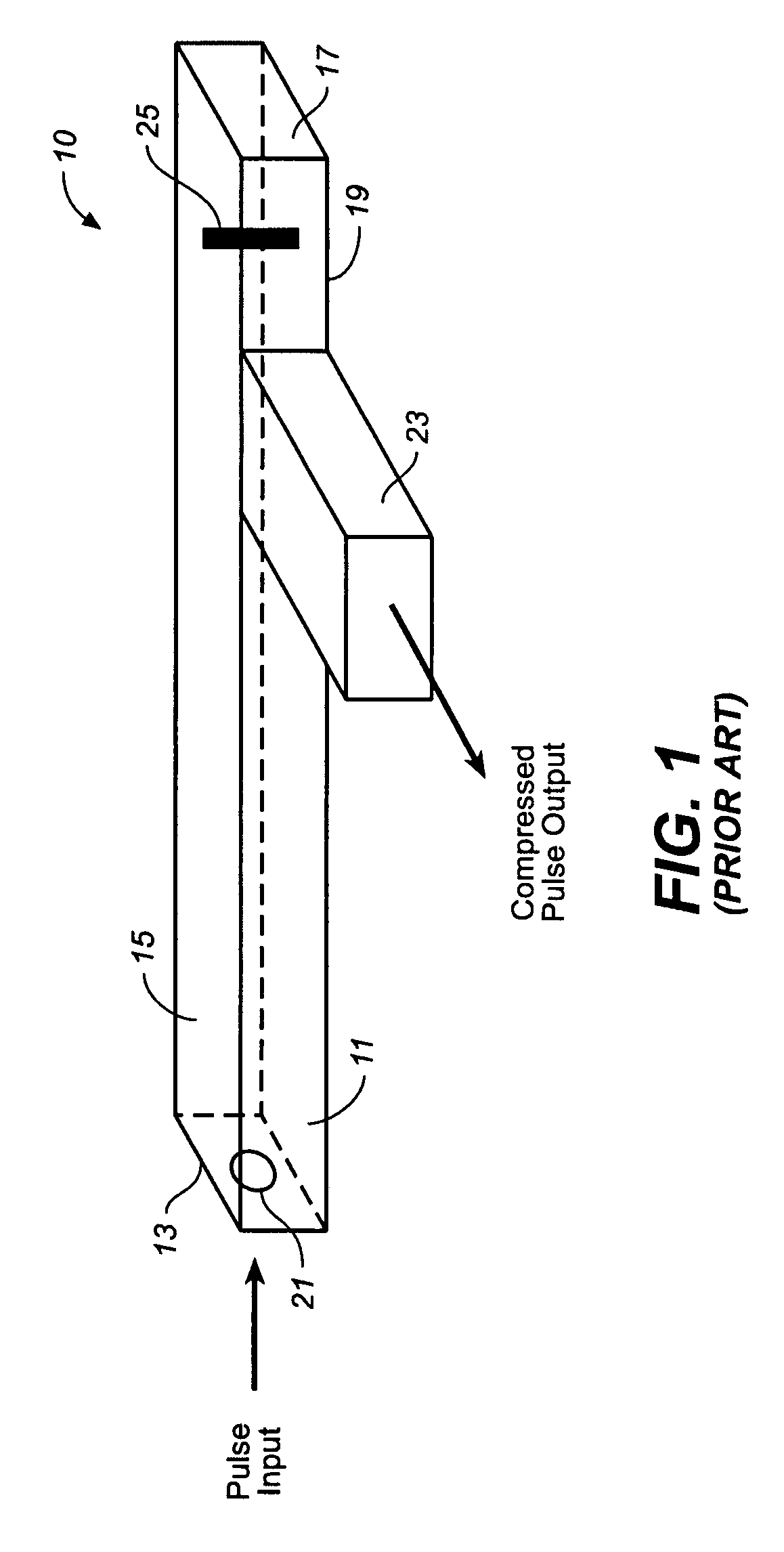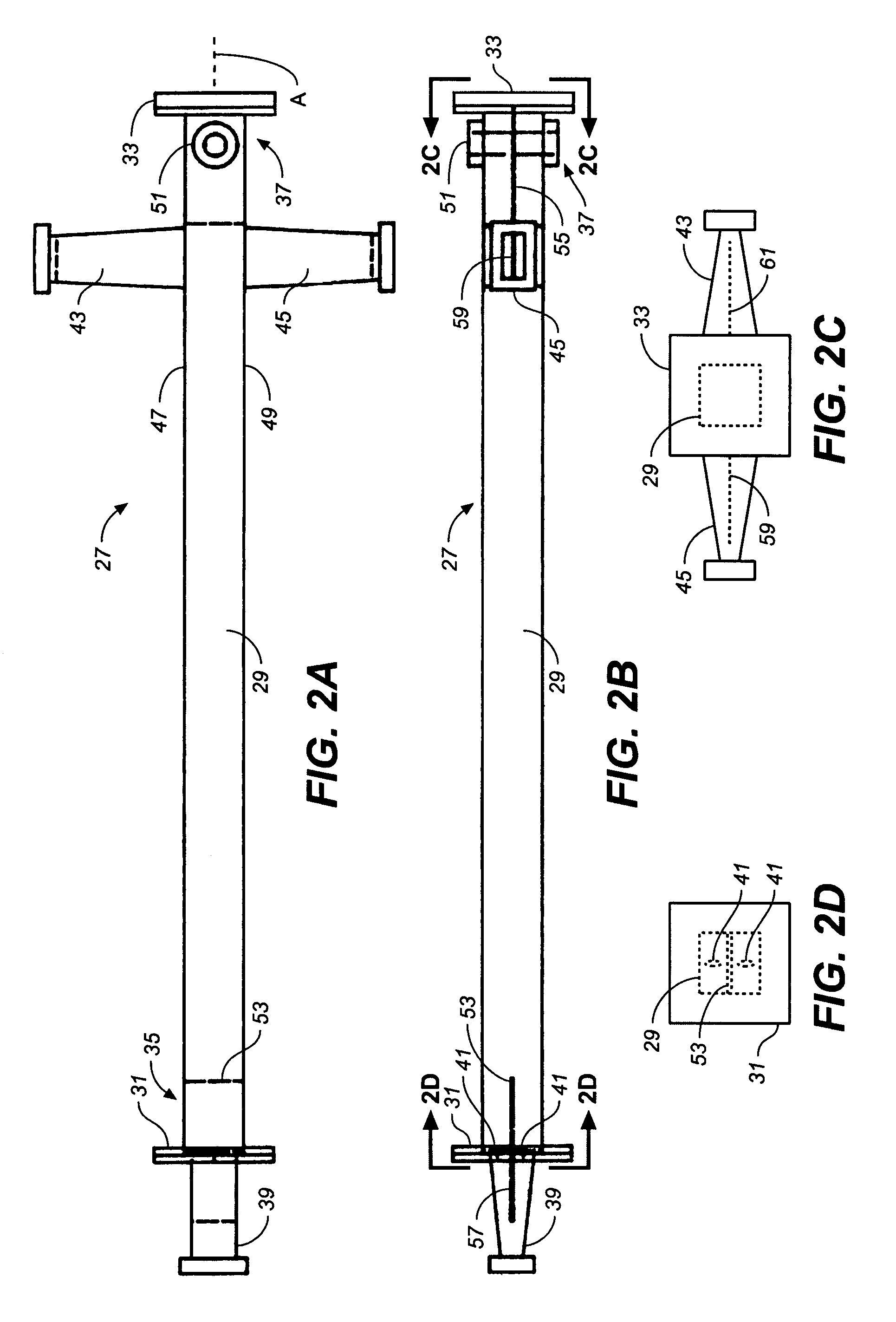Microwave pulse compressor using switched oversized waveguide resonator
a waveguide resonator and microwave pulse technology, applied in waveguides, electromagnetic wave modulation, line-transmission details, etc., can solve the problems of low unloaded quality, limited fundamental mode waveguide structure use, and inability to achieve modest pulse power gains, etc., to reduce gas pressure requirements, reduce field strengths, and prevent electron emission
- Summary
- Abstract
- Description
- Claims
- Application Information
AI Technical Summary
Benefits of technology
Problems solved by technology
Method used
Image
Examples
Embodiment Construction
[0027]Referring now to the drawings, FIG. 1 illustrates the concept of a microwave pulse compressor known in the art, wherein a waveguide resonator 10 sized to propagate only the fundamental mode is formed by a section of rectangular waveguide 11, a shorting end wall 13 at one end of the waveguide section (input end 15), and a shorting end wall 17 at the other end (switch-out end 19). The shorting end wall at the input end 15 has an aperture 21 for coupling pulse power into the resonator guide. Pulse power is coupled out of the resonator guide through output waveguide 23, which is coupled to the sidewall of the resonator's rectangular waveguide 11. This output guide couples stored energy out of the resonator guide upon triggering a fast action switch, graphically represented by element 25, which is typically a plasma switch comprised of a dielectric tube positioned on the centerline of the guide. This tube of the plasma switch runs between the broadwalls of the resonator guide paral...
PUM
 Login to View More
Login to View More Abstract
Description
Claims
Application Information
 Login to View More
Login to View More - R&D Engineer
- R&D Manager
- IP Professional
- Industry Leading Data Capabilities
- Powerful AI technology
- Patent DNA Extraction
Browse by: Latest US Patents, China's latest patents, Technical Efficacy Thesaurus, Application Domain, Technology Topic, Popular Technical Reports.
© 2024 PatSnap. All rights reserved.Legal|Privacy policy|Modern Slavery Act Transparency Statement|Sitemap|About US| Contact US: help@patsnap.com










